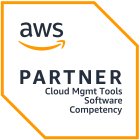What is It Used For?
containerd is primarily used for:
- Container Lifecycle Management: Creating, running, stopping, and deleting containers.
- Image Management: Pulling, pushing, and managing container images from registries.
- Storage Management: Handling container storage and snapshots.
- Runtime Management: Interfacing with low-level container runtimes like runc to execute containers.
- Kubernetes Integration: Acts as the container runtime for Kubernetes via the Container Runtime Interface (CRI).
- Security and Isolation: Provides mechanisms to isolate containers securely.
How Much Does It Cost?
containerd is free and open-source under the Apache 2.0 license. However, associated costs depend on:
- Infrastructure: Servers or cloud resources running containerd.
- Operational Overheads: Time and expertise required for installation, configuration, and maintenance.
- Third-Party Tools: Costs for integrating with registries, storage solutions, or orchestration platforms.
Ownership
containerd was initially developed by Docker Inc. but is now an independent open-source project managed by the Cloud Native Computing Foundation (CNCF). Docker still uses containerd as its default runtime, but the project is maintained and governed by the CNCF community.
Why Not to Use containerd?
While containerd is highly efficient, there are scenarios where it might not be the best fit:
- Learning Curve: Requires familiarity with containerization concepts and low-level management.
- Not Full-Stack: Lacks higher-level orchestration capabilities (e.g., scheduling, scaling) provided by platforms like Kubernetes.
- Complex Setup: Can require more configuration compared to bundled solutions like Docker Engine.
Can I Use containerd Without Kubernetes?
Yes, containerd can be used independently of Kubernetes. It is a versatile container runtime that can manage containers in standalone environments or as part of custom container orchestration setups.
Use Cases
containerd is widely adopted by organizations and projects that require a robust and lightweight container runtime, including:
- Kubernetes Deployments: Used as the default runtime by many Kubernetes distributions.
- Cloud Providers: Integrated into container services like Amazon EKS, Google Kubernetes Engine (GKE), and Microsoft AKS.
- Developers: Preferred by developers building custom container solutions.
Alternatives to containerd:
- Docker Engine: Offers container runtime with additional orchestration and developer tools.
- CRI-O: A Kubernetes-native container runtime focused on simplicity and efficiency.
- rkt (Rocket): A security-focused container runtime, now deprecated but still in use in specific cases.
- Podman: A daemonless container engine offering features like rootless containers and enhanced security.
Alternatives:
- CRI-O: Often preferred for Kubernetes environments due to its tight integration and simplicity.
- Podman: Ideal for development environments where rootless containers or enhanced security are required.
FAQs about containerd:
What is the relationship between containerd and runc?
containerd relies on runc as its default low-level runtime to create and run container processes.
Can I run Docker containers on containerd?
Yes, Docker uses containerd under the hood to manage its containers.
Does containerd support Windows containers?
Yes, containerd supports Windows containers, though Linux containers remain the primary focus.
Is containerd suitable for production?
Absolutely. containerd is production-grade and widely used in enterprise environments.
How does containerd compare to Docker?
containerd focuses solely on the container runtime, while Docker includes additional features like image building, orchestration, and developer tools.



